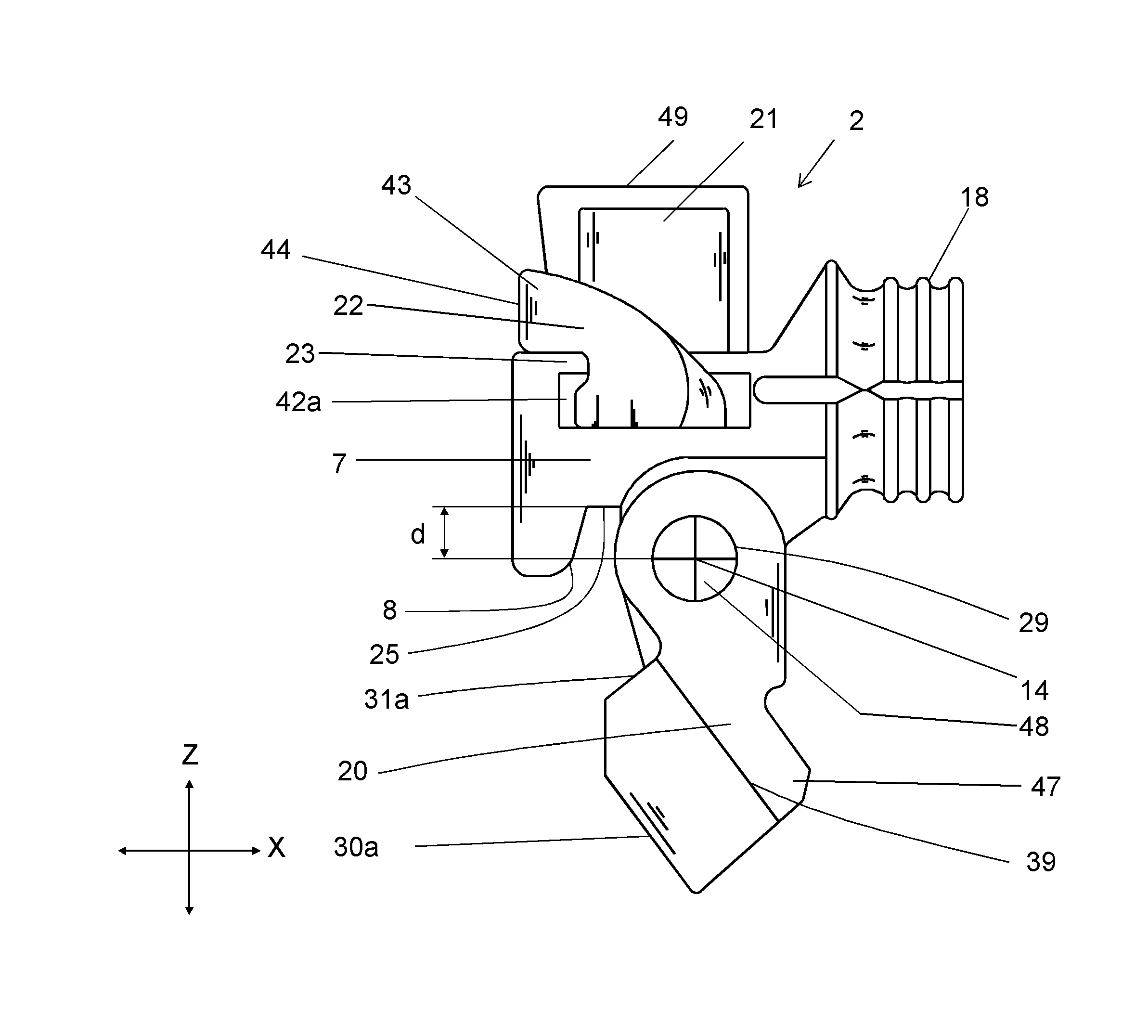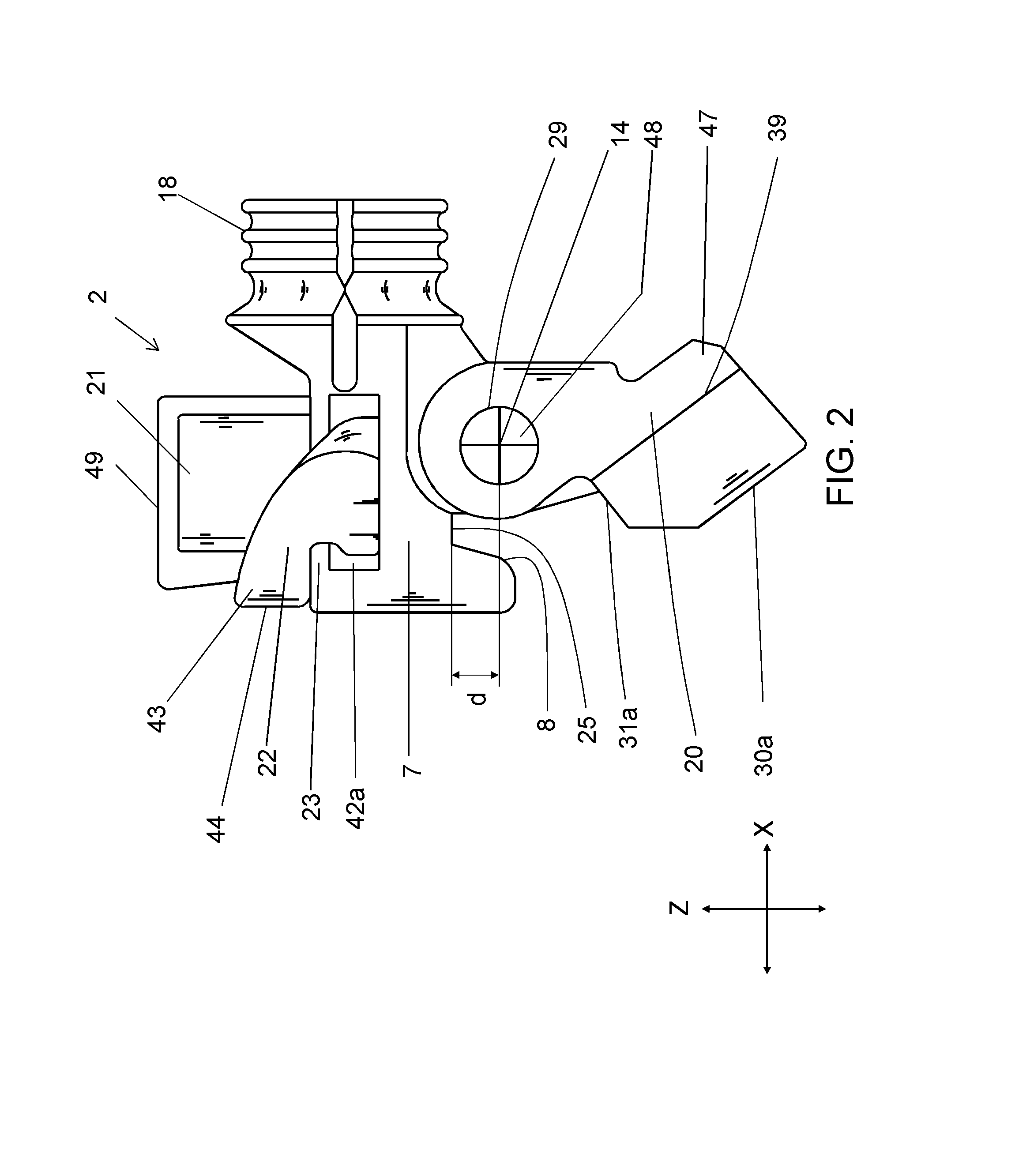Coupling member for scaffoldings
a technology of coupling member and scaffolding, which is applied in the direction of branching pipes, building scaffolds, mechanical equipment, etc., can solve the problems of limiting the strength and robustness of the pivoting clamping member, and limiting the dimension of the pivoting lower clamping member. , to achieve the effect of compact and strong design of the second clamping part, simple and reliable, and more reliable function
- Summary
- Abstract
- Description
- Claims
- Application Information
AI Technical Summary
Benefits of technology
Problems solved by technology
Method used
Image
Examples
Embodiment Construction
[0035]FIG. 1 shows an example of a scaffolding 1 that is equipped with coupling members 2 which can be of the type as described by the present invention. The scaffolding 1 comprises a number of uprights 3 also known as standards which are essentially vertically oriented tubes and a number of scaffolding members 4, 5 which are essentially horizontally oriented tubes and are also known as ledgers. Further, the uprights 3 and the scaffolding members 4, 5 are coupled with each other by the coupling member 2 of the present invention to form the scaffolding 1. The uprights 3 rest at their lower end on a surface which can be the ground, a sidewalk, a floor or the like. The scaffolding elements 4, 5 are at their both ends coupled to the uprights 3 by means of the coupling members 2. The coupling member 2 according to the invention is an extremely rigid coupling and is capable of providing a scaffold that stands alone without external support. However, in traditional applications, when the s...
PUM
 Login to View More
Login to View More Abstract
Description
Claims
Application Information
 Login to View More
Login to View More - R&D
- Intellectual Property
- Life Sciences
- Materials
- Tech Scout
- Unparalleled Data Quality
- Higher Quality Content
- 60% Fewer Hallucinations
Browse by: Latest US Patents, China's latest patents, Technical Efficacy Thesaurus, Application Domain, Technology Topic, Popular Technical Reports.
© 2025 PatSnap. All rights reserved.Legal|Privacy policy|Modern Slavery Act Transparency Statement|Sitemap|About US| Contact US: help@patsnap.com



